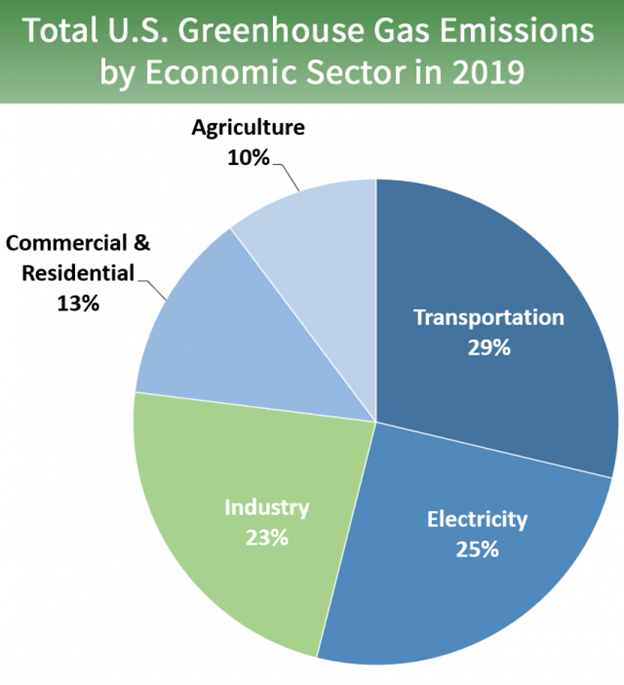In past decades, climate change has been a looming threat with unforeseen consequences. That is no longer the case. The physical impacts of climate change are readily obvious, with more to come. The real estate sector exists on both sides of the issue. It is both at risk for the physical and transitional impacts but is also a large source of the greenhouse gases (GHG) that contribute to global climate change.
In 2019, commercial buildings were responsible for 35 percent of electricity consumed in the U.S. and 16 percent of all U.S carbon dioxide emissions [1]. The majority of these GHGs are emitted through the on-site combustion of fossil fuels for heating and the off-site combustion of fossil fuels for electricity generation.
The real estate sector faces significant and impending risks, which act as an incentive and a driver for change. The building sector is tangibly at risk for the physical impacts of climate change – floods, storms, fires, and sea-level rise. On the other hand, the transitional risks associated with climate change and real estate will have direct financial impacts in both the near and long term. For example, starting in 2024, New York City’s Local Law 97, which becomes more stringent over time, will begin fining (taxing) buildings that emit emissions in excess of their permitted per square footage threshold.
Another transitional risk is changing consumer preferences. Consumers, especially high-end tenants, are increasingly choosing to work in sustainable properties. This sustainable designation implies that energy-efficient buildings cost less to operate, have better air quality and can also attract a higher value tenant. A LEED-certified building is a prime example of a sustainable property.
What does this mean for real estate asset managers and investors? With great risk comes great opportunity. Real estate managers and investors still have time to be on the front end of the curve before they are left behind. There is great value in making operational and investment decisions based on energy-related issues.
The first focus should be on limiting the GHG footprint of a building. GHGs can be managed if they can be measured. One of the first steps to systematically reduce a carbon footprint is to understand the impact. Engaging in a comprehensive GHG inventory will allow asset owners to understand where they are having the greatest negative impact and where cost-effective energy efficiency projects can and should be done.
Wherever you currently are in your approach to ESG, Withum can teach your organization how to best leverage its activities to create real change within your company and the world. Withum’s ESG advisory services identify sustainable business models, hidden risks and most importantly, make way for a better future.
Authors: Joe Holman, Principal and Practice Leader, ESG Services | [email protected] and Baird Newbern | [email protected]
[1] U.S. Department of Energy—Energy Information Administration. Annual Energy Outlook 2020.Table 18. Energy-Related Carbon Dioxide Emissions by Sector and Source. Accessed February 23, 2022.
Contact Us
For more information on this topic, please contact a member of Withum’s Environmental, Social and Governance Services Team.





